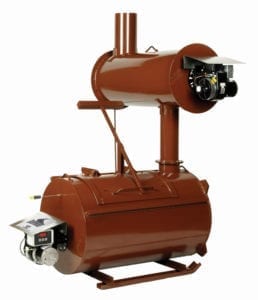Animal mortality disposal options
Animal mortality losses are a normal part of poultry and livestock production. Mortality can occur due to disease, accidents, inter-animal competition or natural disasters such as flooding. It is crucial to have a mortality management plan in place before a death occurs. Disposal should take place as soon as possible in an environmentally acceptable manner. Improper disposal could allow disease transmission and affect air and water quality.
There are several options available for disposing of carcasses including incineration, rendering, burial and composting. Each option has advantages and disadvantages that must be considered during planning for mortality disposal. It is important to factor in local laws when considering options.
 INCINERATION: a safe and effective means of carcass disposal especially from a biosecurity standpoint. The carcass is completely consumed by fire and heat within a self-contained incinerator and carcasses are reduced to ash. An on-site cremator also reduces the need for rendering trucks entering the site therefore eliminating a biosecurity risk from transportation. Incineration is the preferred method for managing small carcasses like poultry and swine as it is the fastest and easiest way of disposing mortalities. 100lbs of carcasses can be reduced to one gallon of ash making cleanup easy. When operated correctly, cremators like the BURNMIZER emit no unpleasant odors. While the capital cost may be a limiting factor for some producers, cremators allow growers the convenience of disposing mortalities as they are generated, eliminating the need for temporary storage. Consider personnel and property safety and choose a location out of public view. Cremators should be loaded, operated, and maintained correctly as per the manufacturer recommendations.
INCINERATION: a safe and effective means of carcass disposal especially from a biosecurity standpoint. The carcass is completely consumed by fire and heat within a self-contained incinerator and carcasses are reduced to ash. An on-site cremator also reduces the need for rendering trucks entering the site therefore eliminating a biosecurity risk from transportation. Incineration is the preferred method for managing small carcasses like poultry and swine as it is the fastest and easiest way of disposing mortalities. 100lbs of carcasses can be reduced to one gallon of ash making cleanup easy. When operated correctly, cremators like the BURNMIZER emit no unpleasant odors. While the capital cost may be a limiting factor for some producers, cremators allow growers the convenience of disposing mortalities as they are generated, eliminating the need for temporary storage. Consider personnel and property safety and choose a location out of public view. Cremators should be loaded, operated, and maintained correctly as per the manufacturer recommendations.
RENDERING: a process of converting animal carcasses to pathogen-free useful value-added byproducts such as meat protein, often used as pet food. In the rendering process carcasses are exposed to high temperatures (about 130C or 265F) using pressurized steam to ensure destruction of most pathogens. Rendering does pose biosecurity risks due to the transportation of livestock mortalities to multiple locations before arriving at the rendering plant. Rendering might not be feasible due to farm location from rendering plant, infrequent pickups, type and volume of mortalities. The rendering market has also changed in recent years due to the price of meat and bone meal deceasing and the use of many rendered byproducts eliminated due to concerns over transmissible diseases such as BSE (Mad Cow Disease).
BURIAL: a common method of carcass disposal but it poses a risk of groundwater contamination if the burial site is not selected and managed properly. Location of the burial site can be quite tricky as it depends on many factors, such as: areas with sandy or gravelly soil and a shallow groundwater table are not suitable, it must be away from any residence, drinking water well, shallow aquifers or flood-prone areas. Often excessive pollutants can build up in burial sites and leaching of nitrogen and phosphorus into water bodies causes eutrophication (excessive richness of nutrients). From a biosecurity perspective, burial is a viable option subject to the carcasses being buried in a timely manner to prevent predators and pests. Carcasses also need to be buried in a timely manner to prevent bad odors. Trenches need to be constructed properly including compacted bottom, layers of soil between the layers of carcasses, and covered with soil mounded to shed rainwater. The mound should be inspected periodically and safety precautions such as fencing open trenches, and caution taken when handling carcasses, digging and backfilling trenches and handling equipment.
COMPOSTING: a naturally occurring process in which the dead animal is broken down into organic matter by microorganisms, bacteria and fungi. The advantages of composting include lower cost as it is easy to prepare piles and windrows created with on farm machinery, and if done properly, lower risk of air and water pollution. Composting has gained popularity in areas where burial and incineration are not practical or restricted. Proper composting techniques will destroy most disease-causing bacteria and viruses. Composting is considered effective and bio-secure, and it can be implemented rapidly on farms at low cost. However, selection of a proper composting site is important to prevent surface water runoff. Proper maintenance of compost piles or windrows is required to avoid anaerobic conditions during the composting process that can contribute to odor issues and greenhouse gas emissions including methane and nitrous oxide.
For a quick, safe and effective means of carcass disposal, consider the BurnMizer for your farm. Request a quote today!
Subscribe to our blog!
